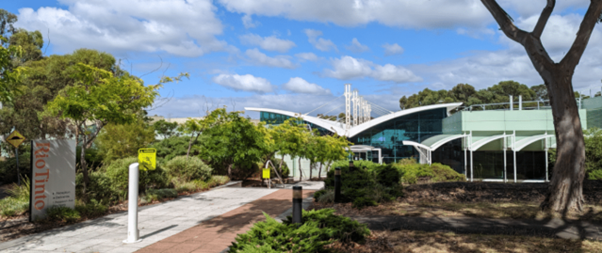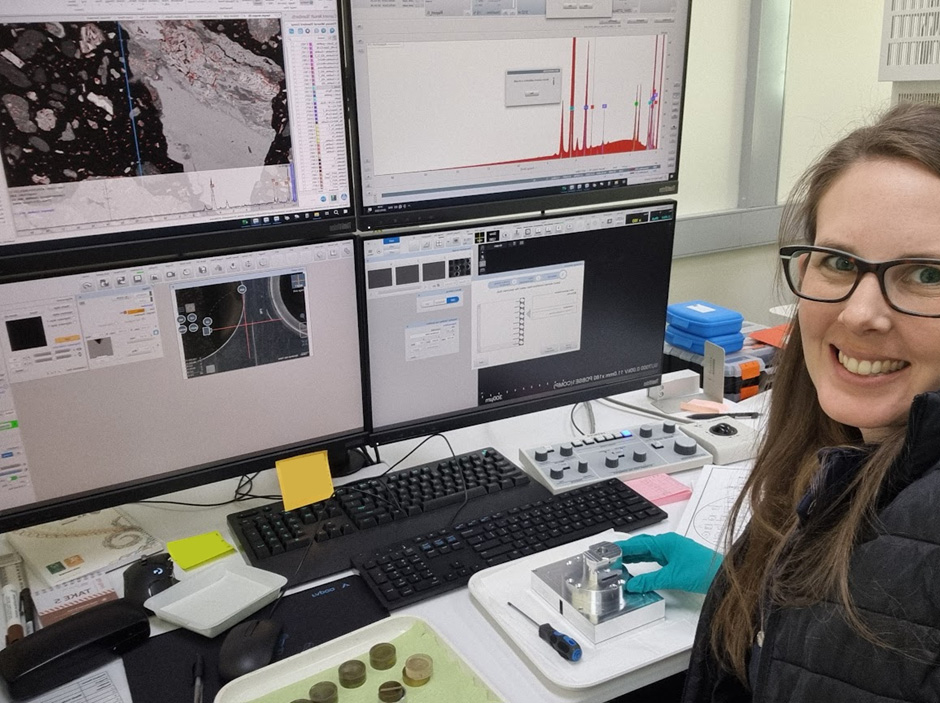Geometallurgical characterisation of scandium ore and waste repurposing: MIWATCH student placement with Rio Tinto
My strongest motivation for undertaking a PhD in geometallurgy and mine waste characterisation with the SMI MIWATCH group was to be able to apply the knowledge gained to improve sustainability within the mining industry. In Quarter 1 2024, I had the opportunity to do exactly this through a student placement with the Rio Tinto Geometallurgy team at the Bundoora Technical Development Centre in Melbourne.

Bundoora is a world class technical facility that drives innovation, science and technology within the Rio Tinto portfolio. It was established in the mid-1990’s as an R&D group seeking to reduce waste at the Rio Kennecott operations by developing a process to recover copper from low grade, complex materials that were previously discarded as unviable waste. The team has now grown to over 110 scientists and technicians from a range of geological, metallurgical, engineering and environmental backgrounds, who work collaboratively to optimise value and drive sustainability within Rio operations. As I got a tour through the immense network of onsite laboratories designed for sample preparation, chemical analyses, metallurgical and environmental test work through to pilot-scale column leach experiments, I was profoundly impacted by the clear support the world’s 2nd largest mining company has invested in innovation and knowledge-building within their sector, especially to promote sustainability.
For a geometallurgist, the most exciting part of the facility was of course the mineralogy lab, which housed 7 SEMs with access to MLA, AMICS, MAPS Mineralogy, 2 binocular microscopes and a TornadoM4. An additional 3 laser mass spectrometers were available across the hall. With this kind of technology at one’s fingertips, there is much opportunity for exploration, orebody optimisation and waste characterisation and reduction.


My placement project focussed on the Burra Scandium project, located in central NSW. It will be the second scandium producer for Rio, in addition to the Sorel-Tracey project in Quebec where high-purity scandium oxide is produced from titanium mining waste rock. At Burra, scandium is hosted in fine grained, heterogenous lateritic ores that have textural and mineralogical features not dissimilar to the tailings I am studying for my PhD research. I was able to apply mineral characterisation techniques and element deportment knowledge to track scandium hosts and build orebody knowledge for optimising the recovery process. We were also able to identify other gangue mineralogy that could be used for matrix valorisation, including generating a gypsum product for the agricultural sector. Our team championed the zero-waste mining narrative. We recognise that the ideal opportunity to achieve this goal is early-on in the mine planning stage, where comprehensive characterisation and innovative recycling, repurposing and valorisation options can be explored. It was enormously exciting to be part of a team actively employing circular economy principles in the mine planning phase of a new project.

The entire Bundoora group and the Burra project team is to be commended for truly living by the Rio core values of Care, Courage and Curiosity in the way they continue to support this project and the people who work within it. Thank you to Jared, Eleanor, Esme and the whole team for welcoming me. From a student perspective, I could not have asked for a more engaging environment to be involved in.

I would like to acknowledge the AusIMM’s Education Endowment Fund scholarship committee and board who facilitated the networking events which made this placement possible.
This opportunity has given me an insight into how applicable our MIWATCH research on mine waste characterisation is to the mining industry and that it can be directly transferred into developing sustainable industry solutions.
